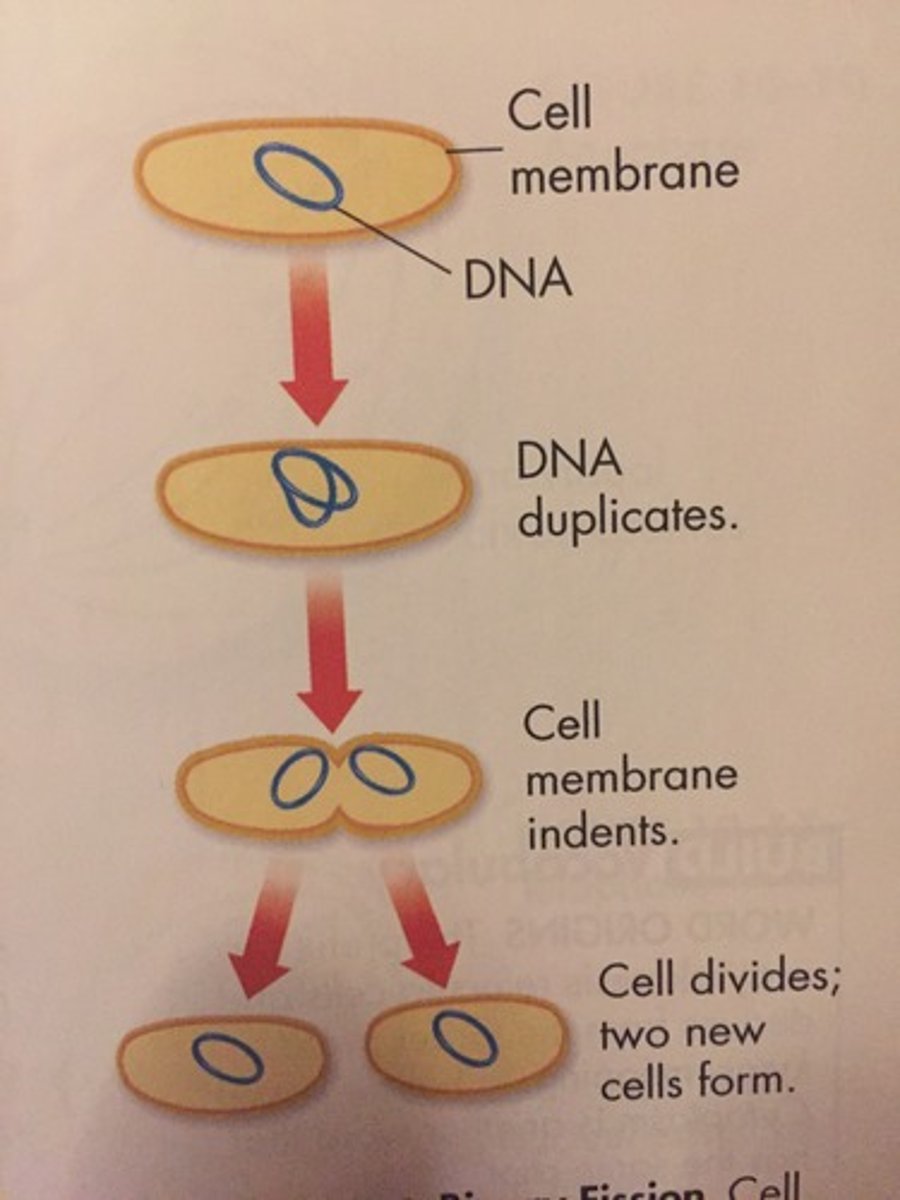BIOL1240 - Chapter 10
1/24
There's no tags or description
Looks like no tags are added yet.
Name | Mastery | Learn | Test | Matching | Spaced |
|---|
No study sessions yet.
25 Terms
Functions of Cell Division
- Single-Celled Organisms: reproduction
- Multicellular Organisms: growth, maintenance, and repair of cells and tissues
- Also a part of sexual reproduction
Genome
All of an organism's genetic material; the way DNA is organized in organisms
Genome in Prokaryotes
DNA is one double-stranded circular molecule
Can also have smaller loops of DNA called plasmids
- not necessary for normal growth, but may have important information
- exchange of plasmids with other cells --> gene transfer in prokaryotes
Genome in Eukaryotes
Several double-stranded DNA molecules in the form of chromosomes
The number of chromosomes in the cell nucleus varies among species:
- Humans have 46, but some plants have over 1000
Somatic Cells
- Normal body cells
- Typically have 2 matched sets of chromosomes
- Diploid (2n)
Gametes
- Egg & Sperm cells
- Have half the number of chromosomes
- Haploid (1n)
Chromosome Arrangement
Arranging the chromosomes by size produces a karyotype
- The human genome has 23 pairs of chromosomes (46 total). Since we have two of each chromosome, we are diploid
Chromatid
One half of a duplicated chromosome
Homologous Chromosomes
Chromosomes that pair in reproduction of diploid cells
Hetereologous Chromosomes
Chromosome pairs that do not match (such as X and Y chromosomes in humans)
Eukaryotic DNA Condensed
Eukaryotic DNA must be condensed into compact chromosomes to fit into the nucleus:
1. Short stretches of DNA wrap around a core of 8 histone proteins (like a string of beads)
2. The histone-DNA complex (the bead) is called a nucelosome and the connecting DNA (string) is called linker DNA
3. This structure coils to form a chromatin fiber
4. Condensin binds to DNA and wraps it into coiled loops that are compacted into a chromosome
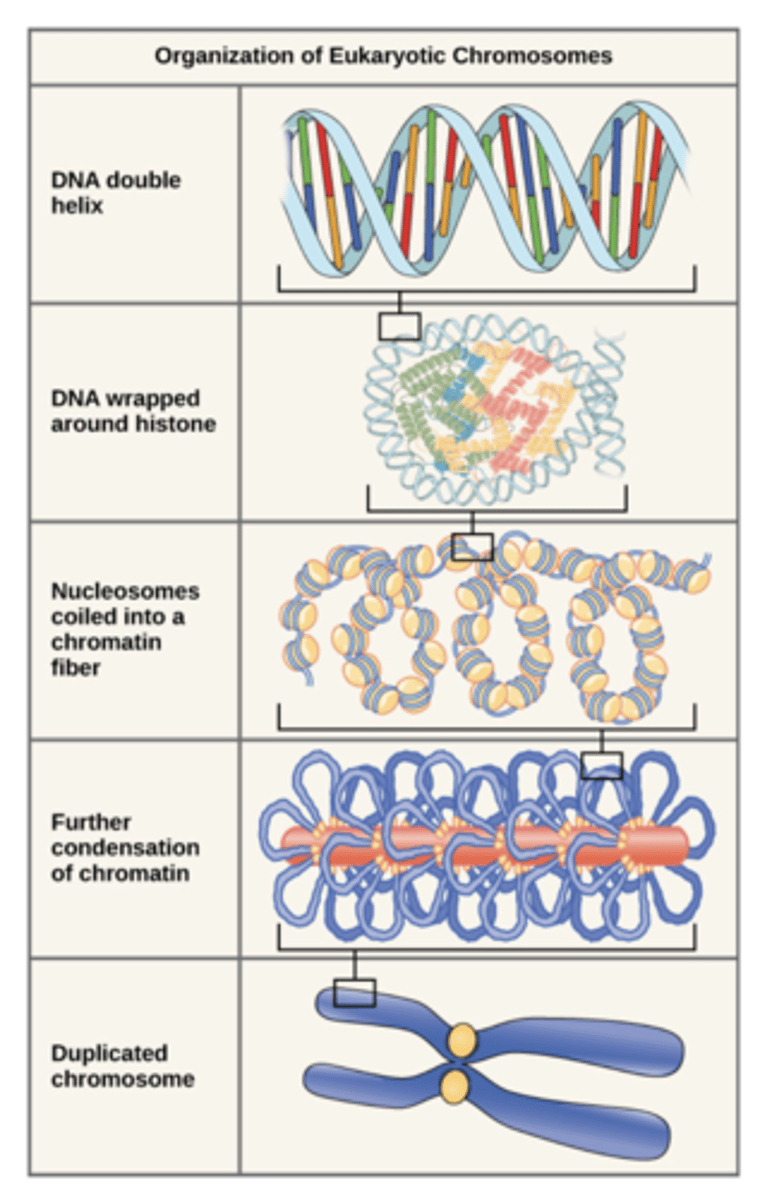
The Cell Cycle
An ordered series of events in the life of a cell. The cell cycle has 2 major phases: interphase & M (mitotic) phase
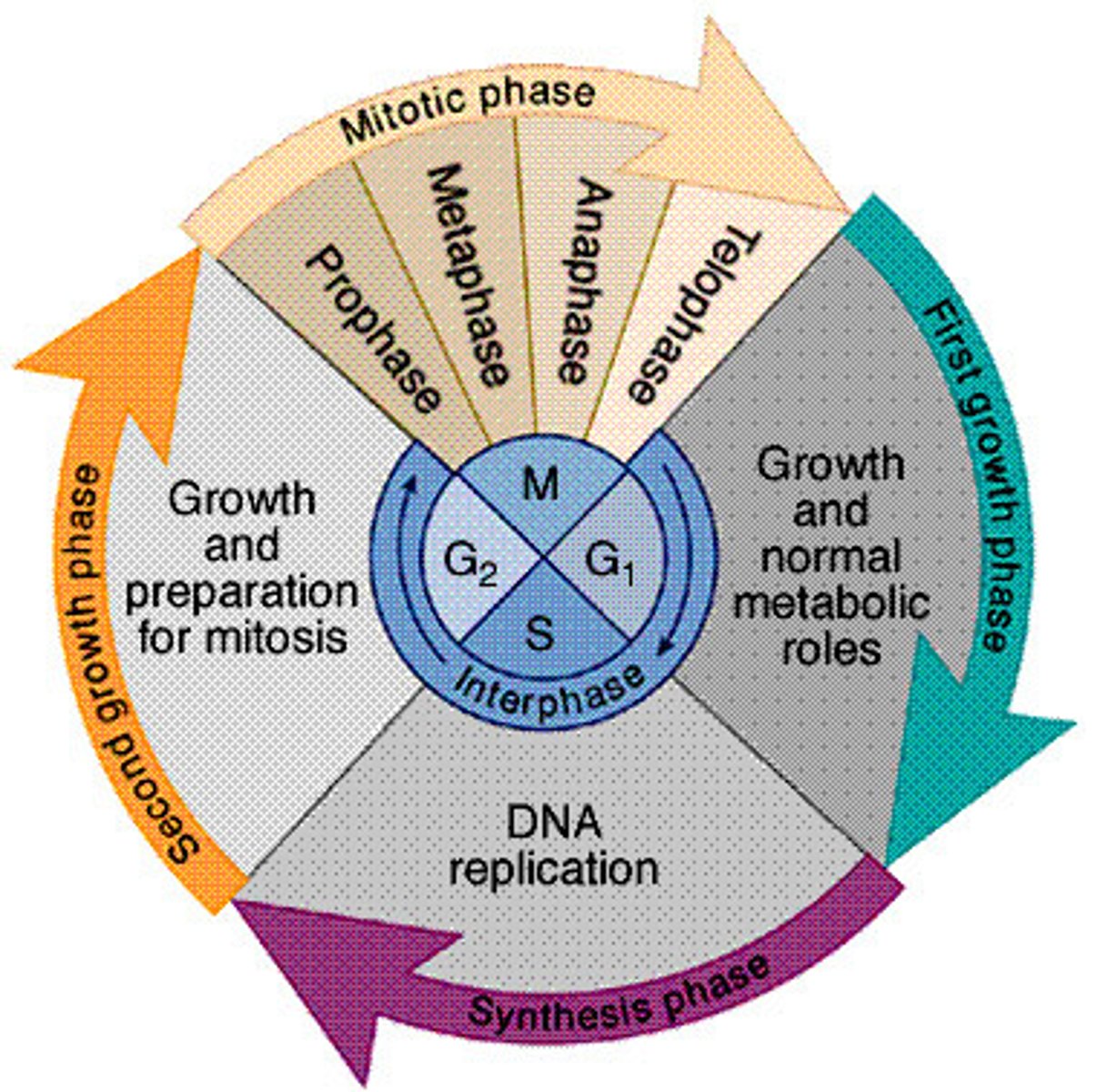
Interphase
This is the time for normal growth and preparation for cell division.
- The cell spends the majority of its life in interphase
- Chromosomes are not condensed so that genes can be expressed
- During the S-phase, DNA is duplicated, and a single chromatid chromosome becomes double or sister chromatid chromosomes
Sister/Double Chromatid Chromosome
- Two identical copies (chromatids) formed by the replication of a chromosome
- A single chromatid is one-half of a duplicated chromosome
- The protein cohesin holds sister chromatids together
Mitotic Phase
Karyokinesis (karyo=nucleus) is nuclear division, the first step of the mitotic phase:
- Prophase
- Prometaphase
- Metaphase
- Anaphase
- Telophase
The second portion of the mitotic phase is cytokinesis (cyto=cell), where the cytoplasmic components separate into two daughter cells
Prophase
- First step of mitosis
- Nuclear envelope breaks down
- Membranous organelles (eg. Golgi body, ER, etc) move toward edges of the cell
- Nucleolus disappears
- Centrosomes begin migration to poles
- Microtubules of the spindle form
- Sister chromatids coil together (aided by condensin proteins)
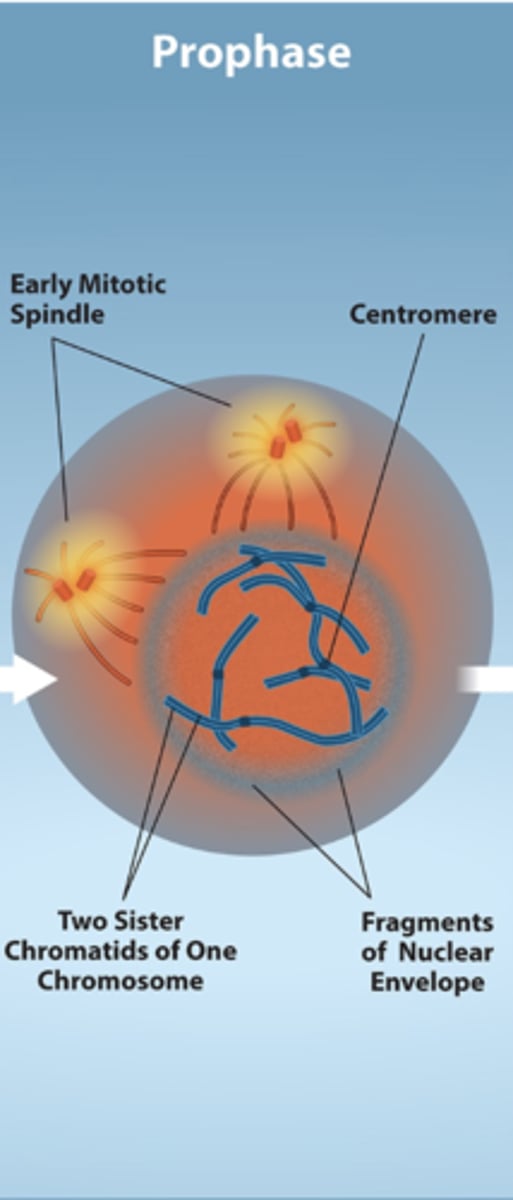
Prometaphase
- Second step of mitosis
- SIster chromatids develop a protein called kinetochore in the centromere region of the DNA
- Kinetochore attaches the chromatids to the spindle microtubules
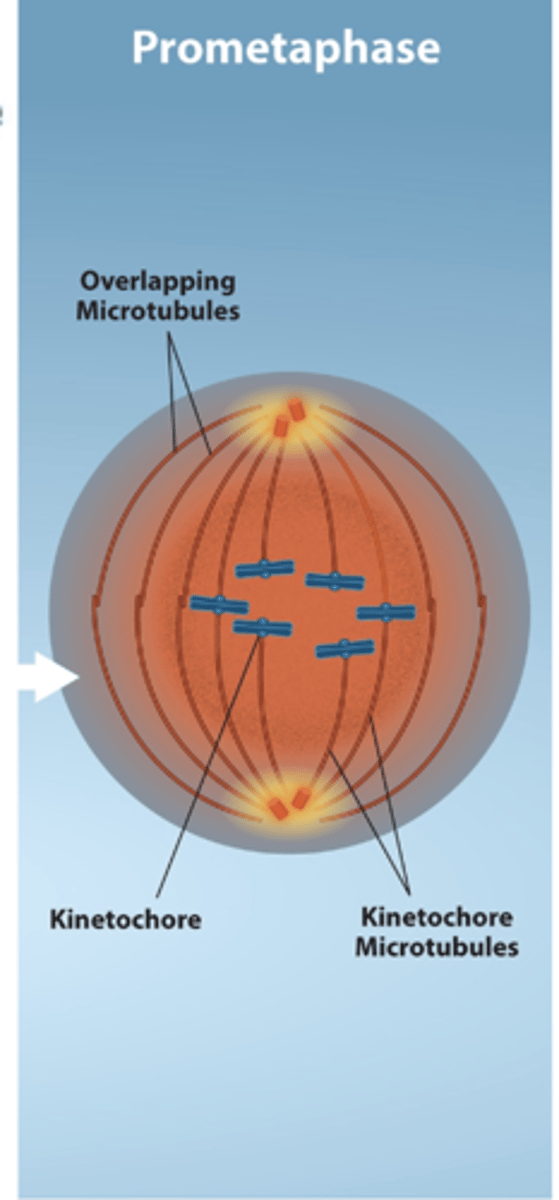
Metaphase
- Third step of mitosis
- One sister chromatid is attached on one pole and the other sister chromatid is attached to the other pole
- Chromosomes line up along the metaphase plate or the middle of the cell
- Sister chromatids remain attached by cohesin proteins
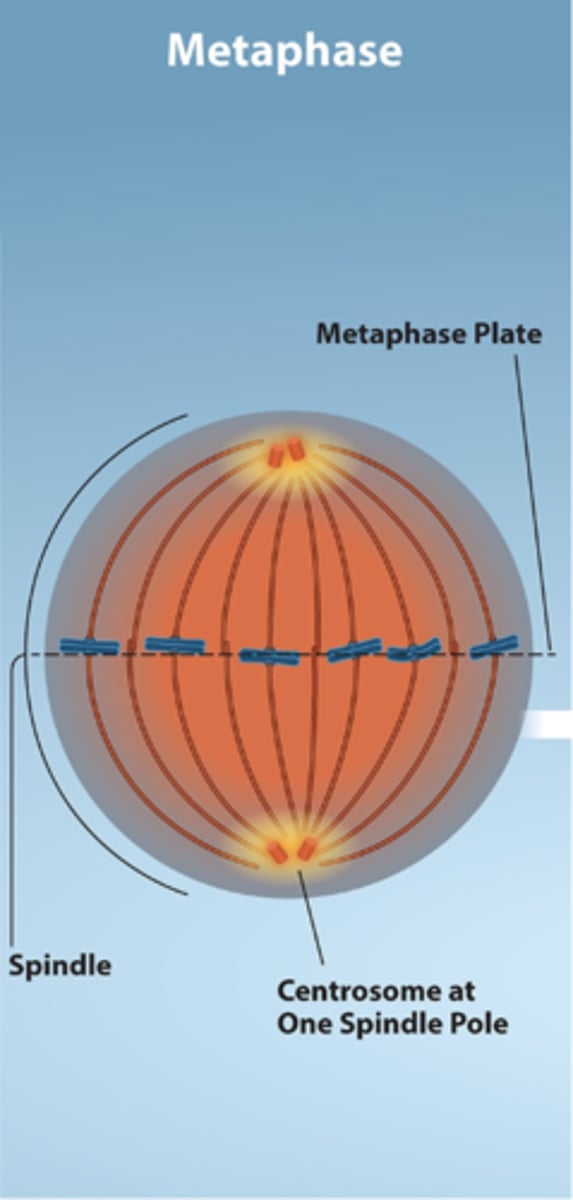
Anaphase
- Fourth step of mitosis
- Cohesion proteins degenerate, allowing chromatids to separate
- Separated sister chromatids move in opposite directions toward the centrosomes to which their microtubules are attached
- Cell elongates
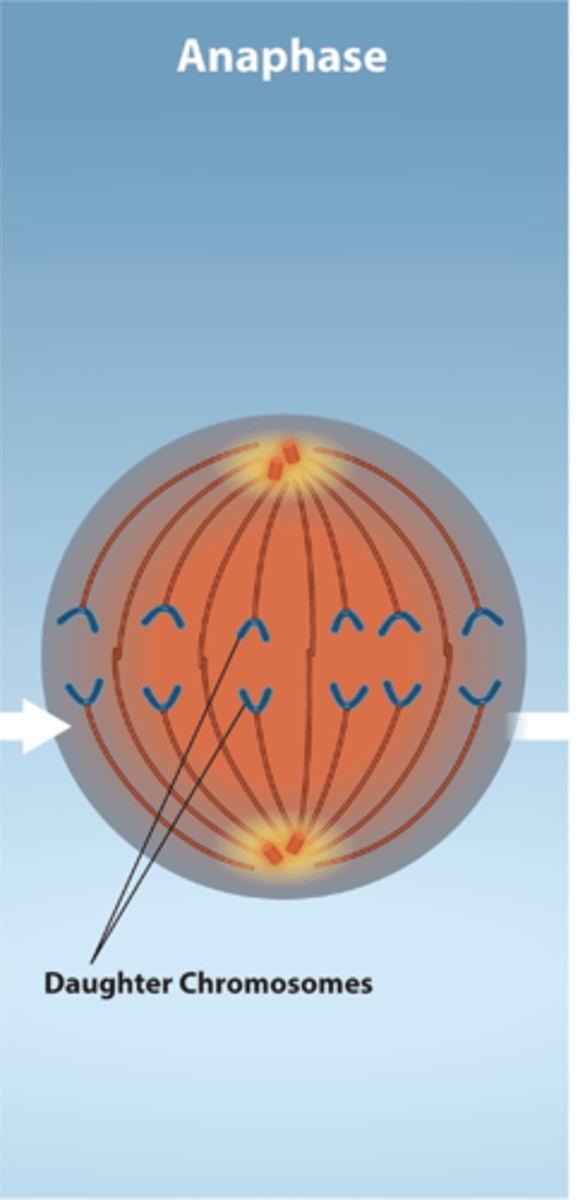
Telophase
- Fifth step of mitosis
- Chromosomes reach opposite poles & begin to unravel
- Spindle microtubules depolymerize into tubulin monomers that will form cytoskeletal components for the daughter cells
- Nuclear envelopes reform around the chromosomes
- Nucleoli appear within the nuclear area
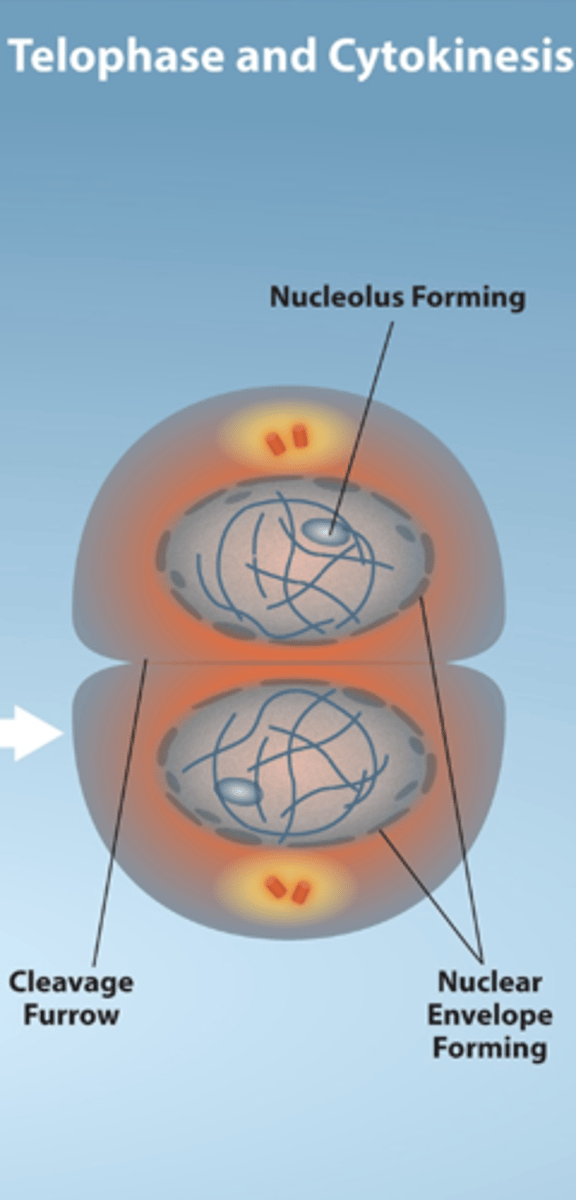
Cytokinesis
- Not considered part of mitosis, but begins in telophase
- Division of the cytoplasm during cell division
In animal cells:
- An actinomyosin contractile ring constricts the plasma membrane, creating a cleavage furrow
In plants:
- Golgi vesicles gather at the cell midplane and fuse to form a cell plate that will become part of the cell wall
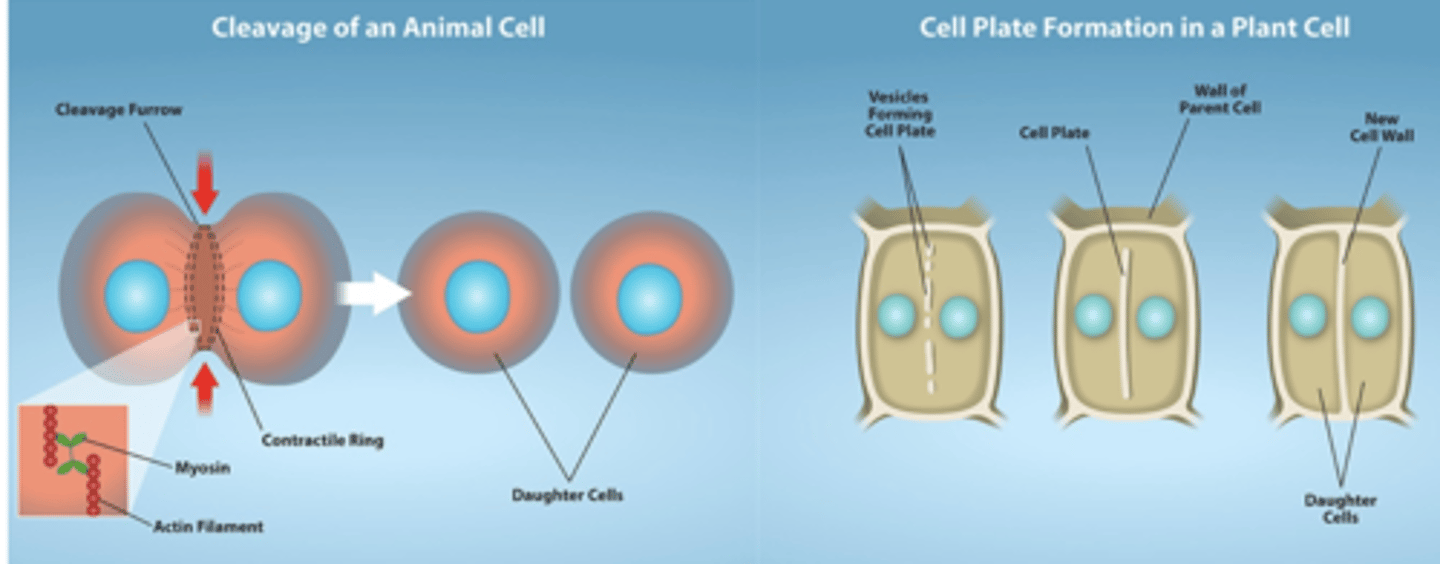
Regulation at Internal Checkpoints
Mistakes affecting function (such as mutated or incorrect number of chromosomes) are regulated at 3 checkpoints in the cell cycle:
1. Near the end of G1 (before replication in S-phase)
2. At the G2 to mitosis transition (verifies replication is done & checks for DNA damage)
3. In metaphase of mitosis (prevents chromosome mis-segregation)
External Triggers that Inittate/Inhibit the Cell Cycle
- Death of nearby cells
- Release of growth hormones
- Cell crowding
Cancer & The Cell Cycle
The term cancer refers to many different diseases characterized by uncontrolled cell growth:
- Begins with a gene mutation that results in a faulty protein that regulates cell reproduction
Two types of regulators are involved:
- Positive Regulators (Oncogenes): promote movement to the next step of the cell cycle
- Negative Regulators (Tumor Suppressors): stop advancement of the cell cycle
Tumors result when the reproduction of mutated cells surpasses the growth of normal cells:
- Results from lack of homeostasis between cell division & death
- Apoptosis: programmed cell death
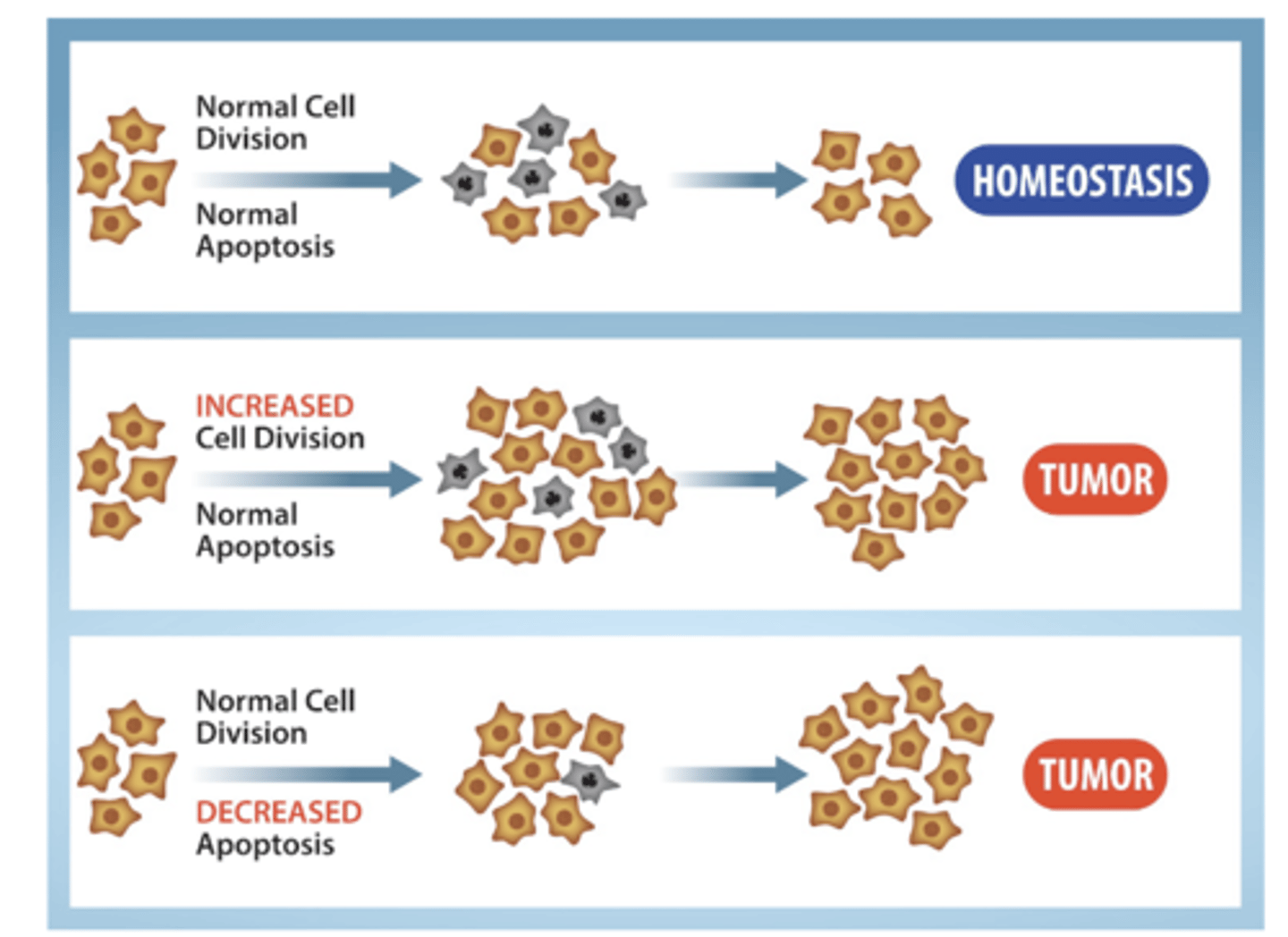
Prokaryotic Cell Division
binary fission
